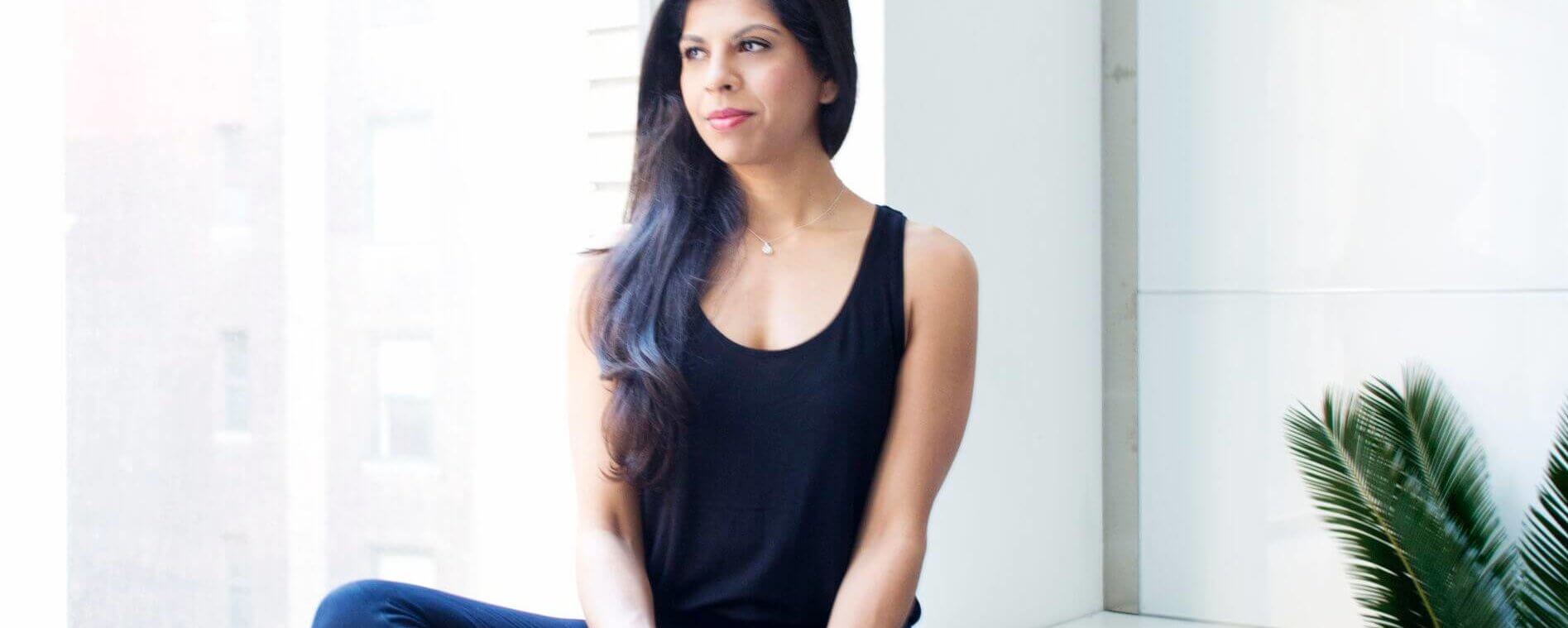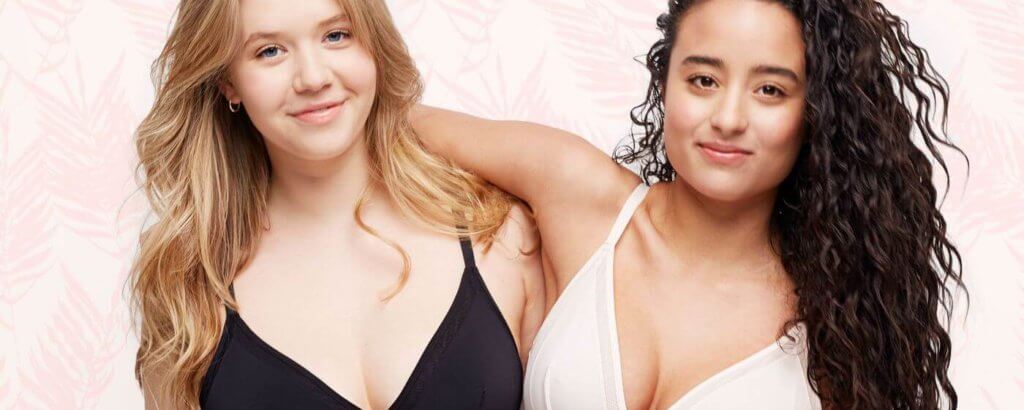Gone are the days when lingerie was only about forcing women to compare their bodies to the impossibly sculpted anatomies of Victoria Secret ‘Angels’, as seen in its airbrushed ads and shop fronts. In fact, in August 2018, shares of L Brands, which owns lingerie incumbent Victoria’s Secret, dipped dismally by over 10%. Arguably, this event heralded the start of a movement in which women are reclaiming their bodies, garments and voices. Fledgling direct-to-consumer brands such as Lively, can be credited for such a market disruption, for the change they bring about by selling beautiful yet comfortable intimate wear customized to bodies of different shapes and sizes.
Apart from its product retailing, Michelle Cordeiro Grant, Founder & CEO of Lively, ensures that the startup also supports a thoroughly engaged community of (primarily millennial) women through various exclusive events and experiences. Such consistent efforts to engender body positivity and empower women has helped the brand see 300% revenue growth in 2017 and expect triple-digit gains again in 2018.
Yet, Grant credits a lot of customer insights and digital storytelling learnings to the five years she spent working at Victoria’s Secret.
An Inclusive Voice for Women’s Innerwear
During her stint at Victoria’s Secret, as a director and senior merchant, Grant noticed that women usually keep two underwear drawers. As reported on the Fashionista blog, she herself had one drawer for stylish lingerie and another for functional and comfortable (but not necessarily very nice looking) innerwear. This got Grant to believe that there was a need to build a product that wove (literally) these elements together. And so she began initiating a conversation in the $13Bn market for American women’s underwear and lingerie market, dominated (35 – 40%) by Victoria’s Secret, about a new point of view. One that sought to voice what women really want from their lingerie.
“I saw all these brands built by men. And stories told in lingerie were basically about how you, as a woman, would put this bra on and think about how would the man perceive me in this,” she told Techcrunch.
While she confessed to admiring Victoria’s Secret from a business point of view, she began to feel that her erstwhile employer was unable to focus on important facets of innerwear such as maternity and comfort. She also recognized a gap in the market for bras that don’t stab women with underwire. “What was lacking was authenticity and real life because what we had built was really about the angel and the fantasy,” she said about Victoria’s Secret to Forbes.
So, in August 2015, she began to invest all her efforts into research. Her goal at that point in time was to understand what should go into the creation of her ‘Brand X’ version of inclusive innerwear.
“For me, creating Lively was a YOLO moment,” said Grant. “I wanted to take everything I learned and throw it out the window.”
She started with creating focus groups (featuring women with varied interests and professions) to find out what sort of a brand image and ethos she should pick. This exercise was conducted for 6+ months. At the end of this, Grant found out that women are looking for comfort above all else. Images and words that resonated with the focus groups were then posted on social media to get further feedback and buy-in from potential consumers. That drove 133,000 inbound emails within just 2 days.
Then, armed with this feedback, she recounted to hypebay how they went about slashing ‘waistbands off yoga pants and stapling them to bralettes’ in what she called ‘a chem lab for fashion’. That’s when she chanced upon something unique. Inspired by athleisure, swimwear and the most functional pieces of lingerie, they were able to fashion a whole new category of innerwear that they christened leisurée.
Featuring the best of function (memory foam pads, comfortable cloth, sporty cuts, front adjusters, J-hook backs) and femininity (gorgeous geometric laces and modern prints like pressed palm leaf patterns) she created a product that can be confidently worn 14 hours a day.
And thus, the digital-first Lively was founded in April 2016, in NYC, run by a team of four women (what has today grown to 15 employees). It also ended up selling its first product in the same month. They strategically targeted the middle of the country and 45 days post the launch, they shipped to every state in the country – selling exclusively online.
But this was just the beginning, Grant was quite particular about who Lively would raise funds from. “The scarier part was the funding,” she said to CNBC, “but I was very focused on the fact that I needed my first investor to be a supplier, because if the supplier is invested in my idea, they’re going to help me fund a factory, perhaps, and be a foundation I need to launch this company the way that I see it is necessary.”
As luck would have it, Grant chanced upon and sold the concept to the CEO of Gelmart International, the largest privately held intimate apparel maker in the world. Gelmant International then became Lively’s founding investor and manufacturing partner.
Ever since, Lively has secured $15M, across three rounds of funding.
Marketing with Pop-up Shops
Putting some of this funding to good use, Lively planned and executed several effective Instagram and influencer marketing strategies, especially in the formative years. The brand pushed a lot of user-generated content and ads featuring real women (most of them early consumers), which made the content very relatable. Until the last count, Lively has 50,000 ambassadors and 122,000 Instagram followers.
Apart from the digital push, the company’s recent rise in sales has been heavily influenced by its experiential pop-up shops.
Lively’s first roadshow was held in Dallas in January 2016, which ended up being profitable even though it was executed at a fixed operational budget of just $12,000.
“When you’re a startup, you have to be really scrappy. The interesting thing is we didn’t actually think we would make money on it, but we did. We had a positive ROI on that store,” said Grant.
Motivated by this success, within the first two years, they conducted 60 events including pop-ups across the Northeast. And each popup store was planned to represent the host city visually and via live musicians and popular local business features.
Across all these events, Grant realized that engaging pop-ups lead to more digital transactions. Backing up this realization was the significant growth in online sales in Dallas (175%) and Texas (80%) during the 2-week roadshows. In fact, based on estimates shared by Forbes, Lively made $10M+ in revenue last year.
Seeing the tangible success of these temporary stores, in July 2018, Lively opened its own flagship store of 2,700 square feet in New York City. Christened the ‘Lively experience store’, it is the brand’s first step into the world of brick and mortar retail.
Only 30% of the space in this store is for product and the rest is left open for in-store events and experiences. Bra fitting sessions can also be scheduled to help customers, in store, find their perfect fit.
Grant said that they are looking to expand to more locations (outside of the East Coast) with physical stores, based on data collected from the New York City store. Dallas and Los Angeles seem to be top contenders.
Further to this, Lively also partnered with Nordstrom, in September 2018. As part of its efforts to improve its distribution, Lively’s products will feature in 11 Nordstrom stores and even on nordstrom.com.
“Our Nordstrom partnership exceeded our expectations. For 2019, we’re hoping to make it bigger, better and broader,” a spokesperson told Business Insider in November.
Supply Chain is Everything
While raising the right funds and deciding on the exact marketing mix is critical, so is fixing the business’s pricing and supply chain.
In order to sell every single one of its bras at a fixed price of $35, where most retailers’ charge between $50-$100, Lively gets all its manufacturing done in its factory in China. This helps the indie brand cut down on some of the expenses that tend to make lingerie expensive. Since lingerie items normally have a good gross profit margin of 50% and are easy to ship, it helps the cause further.
In conversation with Fox Business, Grant mentioned that having complete control over the supply chain is critical for creating a brand that was accessible in size and affordability.
Today, Lively offers 26 different sizes of bras ranging from 32A to 40DD in different styles (such as bralettes, t-shirt bras, and push-up bras). And they plan to keep adding more sizes, as the demand comes through and the product is perfected.
Recently, it also added swimwear ($45 for bikini to $65 for one piece) and a fragrance ($55) for women into its inventory. In order to manage its diverse inventory and reduce excesses, new products are rolled out in small batches.
What’s interesting is that Lively doesn’t advertise its price on any of its ads. It’s only when customers land on the website do they ever see it. The reason for this is that Lively seeks to build a cult following of customers who are loyal to the brand vis a vis discount-hunters.
“If you have women that love your brand for what it stands for and they are so enamored by the price, they share and shout that for you,” she said.
But how does Lively decide what to create and how much? Simple, they ask the customers.
Grant said, “We leverage the relevance of social media and the impact that consumers want to have on the things that they buy. And now you’re flipping the conversation so that it’s not us telling consumers what they should buy, but consumers are telling us what we should make for them to buy.”
Grant admits that some of Lively’s most successful launches were based on customer requests (mostly on social media). For instance, one customer commented “Hey, I love the idea of a bralette but I’m a size DD or a 32 DDD.” So, Lively created a small batch of the Busty Bralette to accommodate this request and it sold out in a matter of 24 hours.
Lively is More than Just Lingerie
Through pop-ups, brick-and-mortar stores and distribution-led tie-ups (such as Nordstrom), Lively delivers much more than just lingerie. It offers a chance for women to connect and network. Such experiences are the true drivers of success for the company, leading to return customers, Grant told CNBC.
“Where we want to be next year is not only focused on triple-digit growth, but it is also focused on fine-tuning our physical experience, and continuing to listen to our community and make sure we’re addressing how a woman feels in a product when she’s looking at herself,” she added.
This is how, even in the face of competing body-positive brands such as Aerie, AdoreMe, ThirdLove and True & Co., Lively intends to stand its ground.
As for its future plans, Grant commented that it would resonate with the tagline on Lively’s home page – “Today, bras and undies. Tomorrow, the world.” They are open to perfecting one product and then embarking on launching another exciting one that would benefit the community, even if it’s in a different vertical altogether.
“We wanted to create a brand where today, we could sell bras and tomorrow, we can sell concert tickets. We don’t know. That’s the fun of it, is that we want to be on this journey with our community. It’s very open.” she said to psfk.
Subscribe to our newsletter





